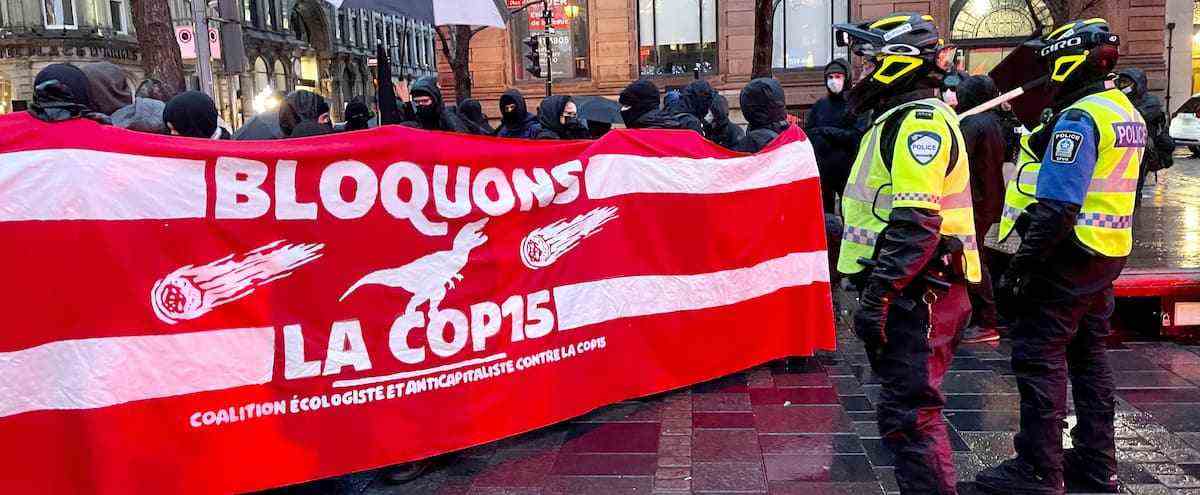Inside Montreal, journalist Louis-Philippe Messier travels mainly on the run, his office in his backpack, on the lookout for fascinating subjects and people. He speaks to everyone and is interested in all walks of life in this urban chronicle.
The disaster scenario of the riot feared by traders around the Palais des Congrès during the Conference on Biodiversity (COP15) did not materialize.
However, since Wednesday morning and the first action of the group Let’s Block COP15, international delegates know that they are never certain of being able to enter or leave the Palais des Congrès.
Photo Louis-Philippe Messier
View of the demonstration from the second floor of the Palais des Congrès.
At the slightest sign of a demonstration, the police do not skimp: they lock the site… sometimes up to thirty minutes after the action.
On Wednesday, dozens of “temporary prisoners” of the Palace (including me) were hanging around, prevented from leaving, and grumbling.
“We are following the instructions of the police and they are asking us to block the exits,” a UN security officer told me.
Some sort of post-event buffer period appears to impose a time frame before reopening, analogous to the 30-minute rule after the last thunderclap before returning to the pool.
“It’s the concern not to leave a breach open through which a group of activists could infiltrate,” explains Stéphane Wall, a retired supervisor of the Montreal police, a specialist in crowd control.
“There is also the possibility of projectiles being thrown by protesters at participants,” he said.
Trojan horse
Photo Louis-Philippe Messier
The demonstrators were banging fences, then they went on their way, and they came back and started again
“It didn’t happen on Wednesday or Friday, but sometimes groups of well-organized protesters break up, and one can act by surprise, while the other distracts attention,” adds Mr. Wall.
The police force seems to me ridiculously disproportionate (almost 10 to 1), I tell him.
“Either we are criticized for having underestimated and for being ill-prepared, or we are told that we are exaggerating, it’s always like that,” replies the former police officer.
According to him, this massive deployment was perhaps justified if it could dissuade potential thugs whose watchword was: “Attack the Palace! »


